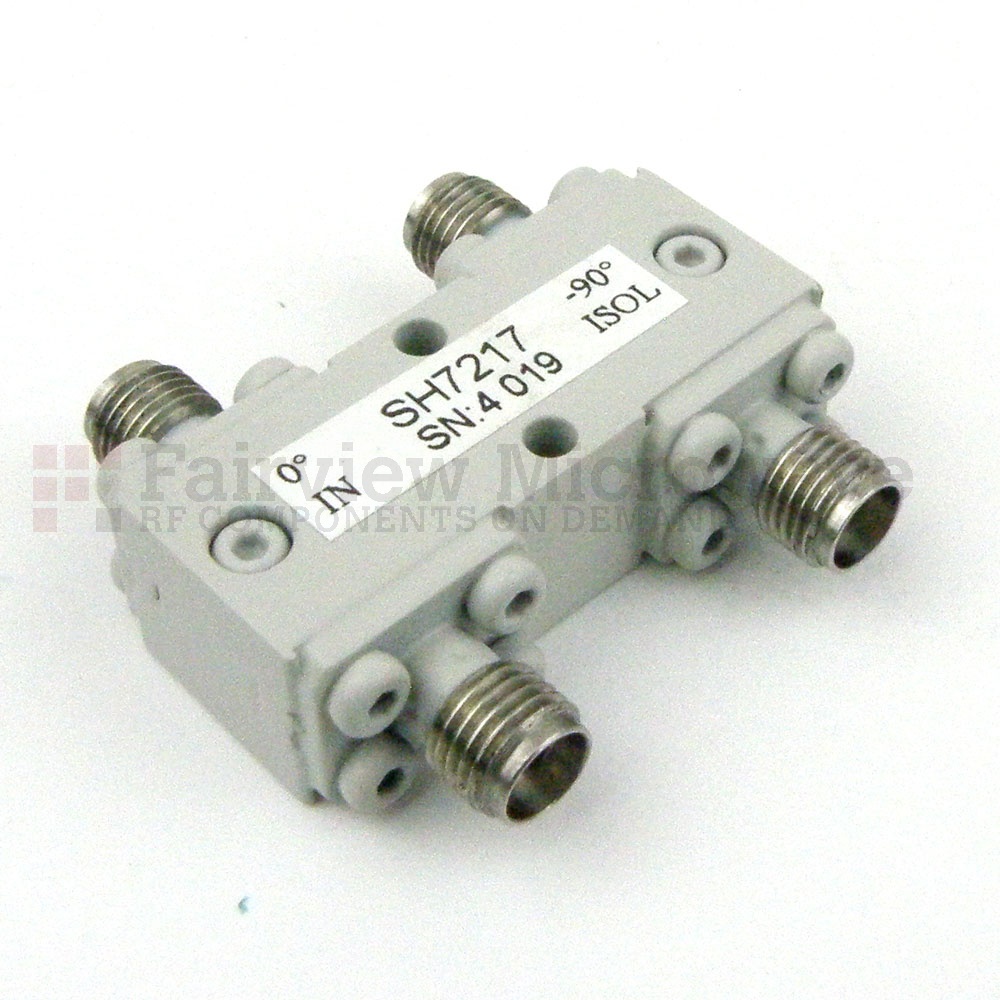A RF Coaxial Hybrid Coupler is a type of RF coupler that essentially behaves as an equal power splitter while also creating a phase shift between the two ports. RF hybrid couplers are generally distinguished by the degree of the phase shift, be it 0 (no phase shift and just a 4-port directional coupler), 90, or 180. A unique attribute about RF hybrid couplers is that the phase shift between the coupled ports is broadband. Other important metrics of a hybrid coupler are the phase balance, amplitude balance, and the extent of the isolation between the coupled (output) ports.

As such, RF hybrid couplers are a special case of four-port directional couplers, which is specifically designed to have a 3dB coupling, or equal power split, and 90- or 180-degree phase shift between the coupled ports. Like with a four-port directional coupler it is critical for the design of an RF hybrid coupler to be as symmetric as possible. The accuracy of a hybrid coupler phase shift is only good to a certain bandwidth. This is also true for the amplitude balance, phase balance, and isolation. Hence, a hybrid coupler is generally only specified over a broad, but fixed, bandwidth based on what is considered a reasonable threshold for these metrics.
180-degree Hybrid couplers are sometimes realized using a rat race coupler designed in a specific way to realize the desired coupling and phase shift between the ports. It is important in the design of a hybrid coupler to achieve low VSWR, isolation, and phase/amplitude balance, which is often why a rat race coupler design is chosen. Another method is to modify a branchline coupler designed as a 90-degree hybrid and adding a 90-degree section to one of the branchline coupler ports.
A use case of hybrid couplers is to enhance the isolation between two RF signal paths that cross each other. Other methods of achieving this could be to use an airbridge or a wire bond cross over to provide physical isolation. A planar hybrid coupler, on the other hand, can be used to isolate two crossed paths in-plane. All that is required is to cascade two hybrid couplers together, and the four-port network that results has isolation between the two RF paths. It should be noted that this method does limit the bandwidth of the signal paths and does require significant board or die real estate.
Learn more about 90 Degree Hybrid Couplers in this post by Fairview Microwave: https://blog.fairviewmicrowave.com/2022/06/30/what-is-a-90-degree-hybrid-coupler/


